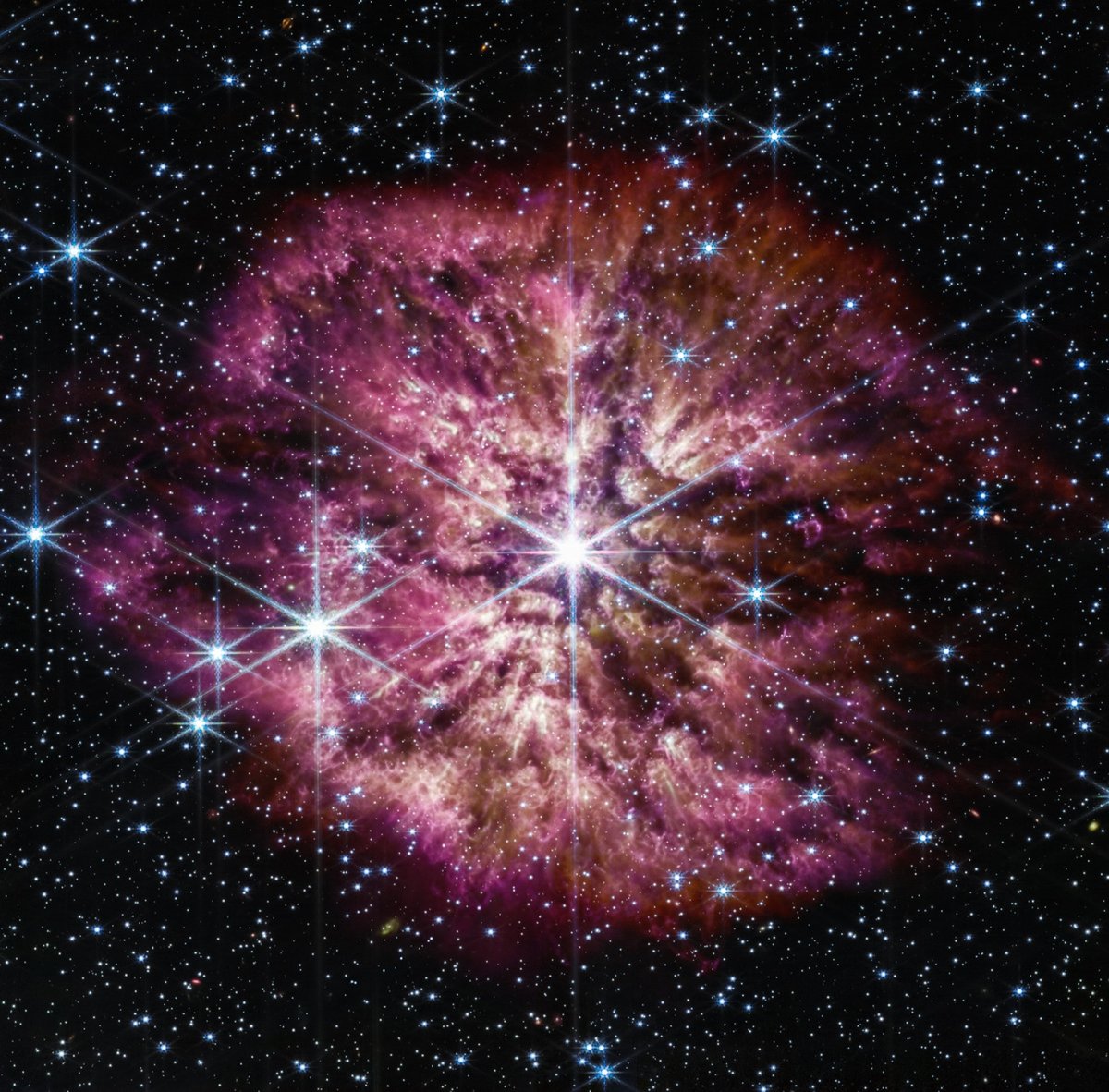A Prelude to a Supernova

Folks, I told you that this was going to become a JWST fan blog and if you didn’t hear me the first time, consider yourself notified. NASA’s newest space telescope is still stretching its legs, but even back in its early days last summer, it captured this breathtaking near-infrared and mid-infrared image of a star preparing to go supernova.
The 10 light-years-wide nebula is made of material cast off from the aging star in random ejections, and from dust produced in the ensuing turbulence. This brilliant stage of mass loss precedes the star’s eventual supernova, when nuclear fusion in its core stops and the pressure of gravity causes it to collapse in on itself and then explode.
Images like these are useful for studying dust, which sounds a little boring but actually is fascinating (italics mine):
The origin of cosmic dust that can survive a supernova blast and contribute to the universe’s overall “dust budget” is of great interest to astronomers for multiple reasons. Dust is integral to the workings of the universe: It shelters forming stars, gathers together to help form planets, and serves as a platform for molecules to form and clump together — including the building blocks of life on Earth. Despite the many essential roles that dust plays, there is still more dust in the universe than astronomers’ current dust-formation theories can explain. The universe is operating with a dust budget surplus.
Currently imagining a sci-fi office dramedy about the dust budget surplus — someone over at HBO Max or Apple+ get on this.





Stay Connected